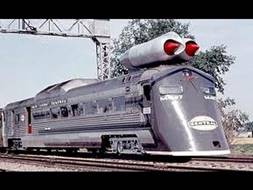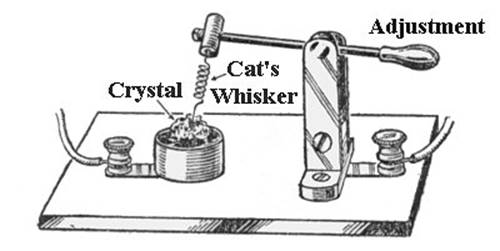*From:* "Bob Frankston" <Bob19-0501 [ at ] bobf [ dot ] frankston [ dot ] com>
*Date:* July 18, 2016 at 12:39:20 PM EDT
*To:* dave [ at ] farber [ dot ] net, " 'ip'" <ip [ at ] listbox [ dot ] com>
*Cc:* dewayne-net [ at ] warpspeed [ dot ] com
*Subject:* *RE: [IP] US, NSF to put $400M into Advanced Wireless Research
Initiative for 5G networks*
[image: https://i.ytimg.com/vi/w8ZIJFlU_pA/hqdefault.jpg]This approach is
premised on the idea that the problem is that today’s pipes aren't fat
enough. It doesn't address the lack of what I'm calling "ambient
connectivity" which would allow us to assume connectivity rather than
having to negotiate with and satisfy the needs of a third party in the
path. The term "dynamic spectrum sharing." Is based on the assumption that
we need dedicated pipes (or frequency) in order to communicate.
Think of how very different the Internet works. We don't negotiate with
owners. We just connect.
If anything, some of attempts to "improve" the pipes have led to the
problem of buffer bloat (https://www.bufferbloat.net/projects/
<http://postlink.www.listbox.com/2164816/26f4175f9a958341e9fa823eefda1168/5548745/d2fcac48?uri=aHR0cHM6Ly93d3cuYnVmZmVyYmxvYXQubmV0L3Byb2plY3RzLw>)
because placing buffers presented a false view of actual capacity so the
end points were, in fact lied to. The result was labelled congestion when
it was really the carriers working at cross purposes with the Internet’s
connectivity.
This is why it is so important to understand that the Internet is something
very different from traditional networks. Thanks to best efforts packets we
don't use dedicated pipes. Instead we use software to share the common
medium by using packets that can be resiliently reassembled (or
reinterpreted) at the end points. Why focus at wireless in isolation rather
than moving towards a common infrastructure and thus maximizing the network
effect (sometimes called Metcalfe or Reed's law) by taking advantage of all
means available?
[image:
http://www.historywebsite.co.uk/Museum/Engineering/Electronics/history/catswhisker.jpg]It's
as if we wanted to increase the capacity of a one-lane road by building
more one lane roads treating each lane as a railroad track guiding a train
of cars a well-defined destination. A multilane road is a way to
dynamically share the capacity and give us vastly more opportunity without
having a central authority managing the lane. The use of packets also means
that we don’t have to have a separate wired and wireless approach. Each
fiber or wire contains a large amount of "spectrum" so why share a single
radio medium when we have thousands or millions of fibers available?
Wireless is important for the local hop and if it works well for distance
too then fine but let's not entangle scarcity created by legacy engineering
and business models with a physics problem.
And all the capacity comes to naught for connected things as long as we
have a business model that requires preventing devices from connecting
until they can negotiate past paywalls. Making failure the default is not
the Internet. It's more a traditional telecommunications model with dumb
devices that are monetized as end-points on a managed network.
Wearing my IEEE hat I've been reviewing articles on "Mobile Edge Computing"
and IoT and what is striking is how all of the articles are about carefully
designed smart cities (and the like) with every element planned and
managed. *This is the antithesis of a dynamic Internet. But it is the
comfort zone of traditional engineering for-a-purpose rather than honoring
the Internet's design point of enabling unanticipated innovation. So no
surprise to see a faster version of the old model. Like putting jet engines
on a rail car.*
Bob Frankston
http://Frankston.com
<http://postlink.www.listbox.com/2164817/216d2c42f83b0cae4b7348e534f69ffd/5548745/d2fcac48?uri=aHR0cDovL0ZyYW5rc3Rvbi5jb20>
--
--
---------------------------
http://www.eellak.gr/,
http://mycontent.ellak.gr/,
http://www.creativecommons.gr,
https://opengov.ellak.gr/,
https://opendata.ellak.gr/,
https://opendesign.ellak.gr/,
http://mathe.ellak.gr/


----
Λαμβάνετε αυτό το μήνυμα απο την λίστα: Λίστα Ενημέρωσης για τις Ανοιχτές Τεχνολογίες για τη Σύγχρονη Πόλη (Smart Cities),
https://lists.ellak.gr/smartcities/listinfo.html
Μπορείτε να απεγγραφείτε από τη λίστα στέλνοντας μήνυμα ηλ. ταχυδρομείου στη διεύθυνση <smartcities+unsubscribe [ at ] ellak [ dot ] gr>.

